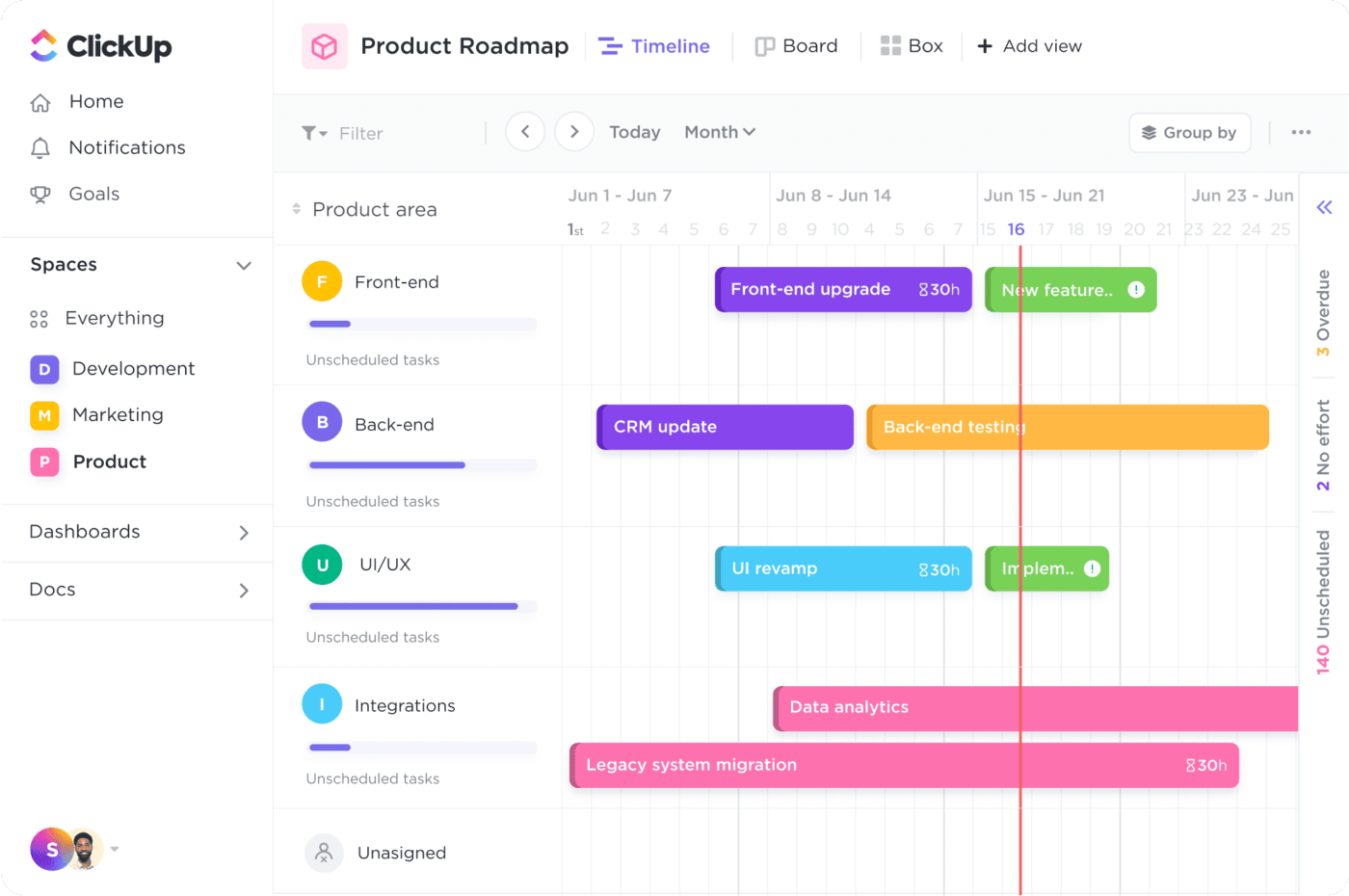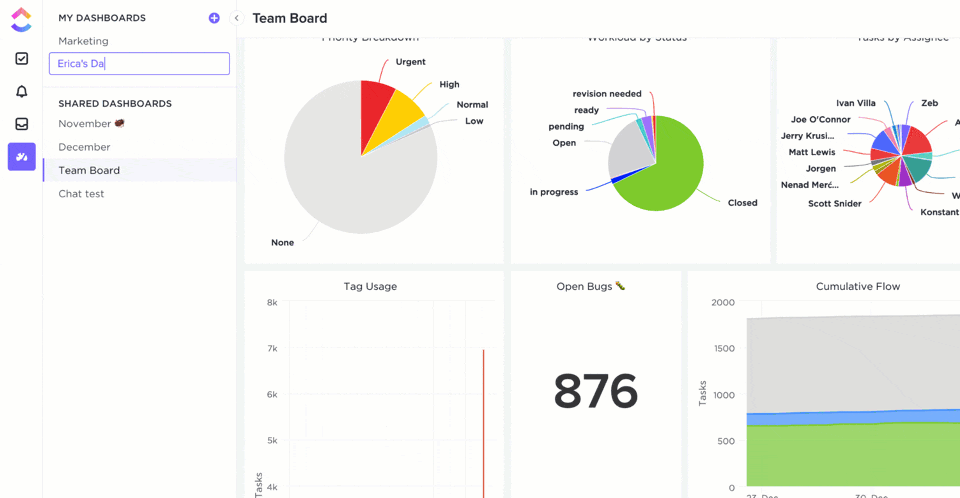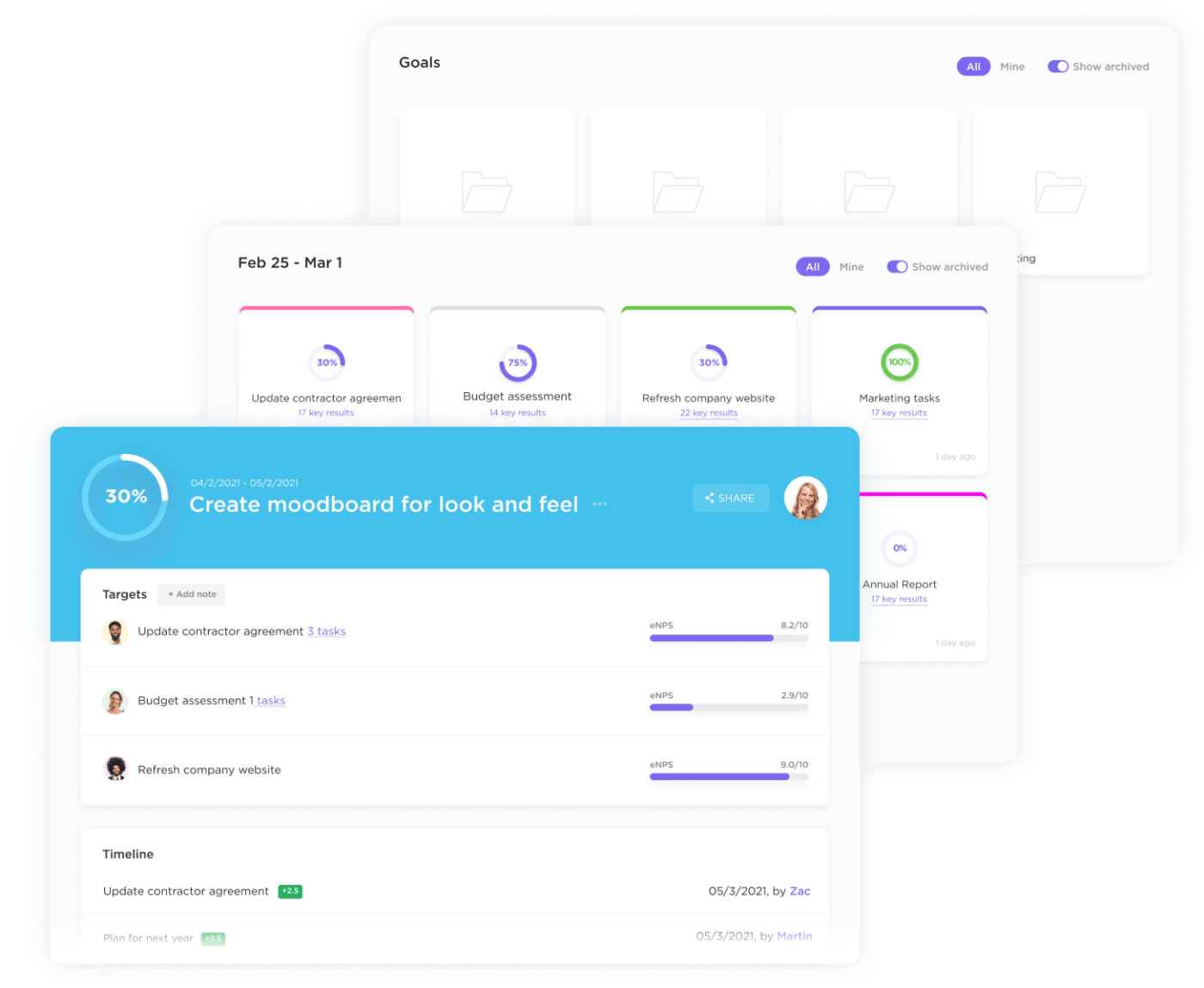How to Improve Your Product Marketing Strategy: A Step-by-Step Guide

Sorry, there were no results found for “”
Sorry, there were no results found for “”
Sorry, there were no results found for “”
Today’s largest and most profitable companies have one thing in common: they revolve around a product. Whether physical or digital, consumer or SaaS, products are the growth lever of industries today. Many companies have even banked on their product to bring them the initial traction—which we now call ‘product-led growth.’
Forward-thinking organizations know how to market their products and unlock growth and revenue opportunities.
However, demonstrating your product’s benefits and value proposition is an art. It takes planning, effort, and strategy to get your product to market—and keep it there. Use this comprehensive guide to learn how to drive a successful product marketing strategy, even if you are a one-person product marketing team.
Before discussing product strategy in marketing, let’s understand product management.
Product management focuses on managing a product’s life cycle—from development to launch.
A product marketing strategy is a part of product management, which circles around marketing the product and making it market-ready. This strategy links the product development process to product awareness in the customer’s mind.
Conceptually, a product marketer uses brand management strategies and sales tactics such as lead nurturing, cross-selling, up-selling, etc., to promote products. In a sense, product marketing is as sales-focused as it is product-led.
Product marketing is the driving force to help businesses:
A product marketing strategy may seem similar to traditional marketing strategies, but there are subtle differences—traditional marketing promotes the company or brand as a whole, whereas product marketing is more narrow in scope as it is product-focused.
Product marketing focuses on marketing to the customer and accelerating demand and adoption, while traditional marketing focuses on acquiring and converting customers while ensuring the brand’s messaging is consistent across channels.
Since product marketing is product-centric, it is often a part of the product function within a company, unlike the rest of the marketing functions, which report to the Head of Marketing or CMO.
Michael Shipper, a Product Marketing Manager at Google, explains:
A product in that space is very much like a building that is constantly under construction. It’s never quite finished; there are always improvements that could be made, and I think that’s what separates product marketing from other kinds of marketing.
Product marketing sits at the intersection of the customer support, sales, product, and marketing teams.
While this helps the brand approach product marketing more holistically, it complicates the process. Here are the common pitfalls the product marketing team faces when creating a well-rounded strategy:
An efficient go-to-market product strategy positions the product strategically, builds awareness via contextual promotions, and leverages thought leadership to cement authority. But with the product, marketing, sales, and customer service teams working in silos, there’s a clear disconnect.
In this scenario, using a tool like ClickUp’s all-in-one product management platform would be a step in the right direction. Highly customizable in functionality, ClickUp frees teams from inefficiency and wasted time.

This centralized tool replaces all productivity, communication, and task management software across departments and enables collaboration with a single application for tasks, docs, chat, goals, and team management.
The real question remains: How do you create a product marketing strategy to bring your product to the customer’s proverbial doorstep? Here’s a step-by-step checklist:
Start by gaining deep knowledge of your target customers to create a well-researched buyer persona:
The data you collect when creating your buyer persona becomes the basis of your product requirements for the next development cycle. To ensure the data is captured, stored, and appropriately shared, leverage ClickUp Brain—an AI-powered tool that streamlines product management.

Use the right AI prompts to develop a comprehensive product requirements document, map it to your customer’s needs, and share it with the team with one click. Whether you want to fast-track your product plans and documentation or streamline customer feedback, ClickUp Brain gives you the tools you need in one place.
Product positioning and messaging are all about demonstrating how your product can benefit customers with contextual messaging.
Arriving at the right product positioning and messaging is a team effort. Don’t let a hybrid working style put your brainstorming sessions on hold. Try ClickUp Whiteboards—a virtual whiteboard that converts your team’s ideas into coordinated actions.

This visual board allows you to add notes, images, links, tasks, etc., map your product vision to the messaging, and align your team—all using a fun, creative canvas!
When picking each other’s brains, use these points to build a customer-centric go-to-market product messaging narrative:
Pro tip: Collate this information for your marketing plan using the ClickUp Docs feature, which helps you to edit the document in real-time with the team and tag your teammates so that everyone is looped in and on the same page, including the sales, product, marketing, and customer support teams

Bonus: You can use ClickUp Brain to create an elevator pitch out of this document and encapsulate what makes your product stick in an engaging format.
You’ve done the grunt work; now it’s time to put it together as a product roadmap. Depending on how product and marketing are structured in your organization, you will either own the roadmap or collaborate with a product manager who will.
You can use process mapping tools to optimize your product marketing workflow.
Another readily available option is ClickUp’s Gantt Chart view. This feature allows you to organize tasks based on product area, see a timeline, and add sprints into a shared highly-visual product roadmap—so teams can see what they’re working toward and what comes next.

The information in the product roadmap will guide your go-to-market strategy. You can create a product roadmap for your website, mobile app, and more:
If you want a macro-level overview of your product’s features and an understanding of how your initiative relates to your organization’s vision and strategic direction, ClickUp’s Product Roadmap Template can help. It is a great way to map out each step of the product development cycle, from ideation to launch. Use this template to provide weekly execution updates to the leadership team and publish release notes internally as well as externally.
Here are a few essential data points you must include within your product roadmap template:
Not sure which product to prioritize? ClickUp’s Product Features Matrix Template helps you compare different product features to assess whether each feature aligns with the goals and needs of your target audience.
If you need to track crucial data points such as feature type, customer, value, impact, and more, this template throws light on:
Marketing tools are a must-have today—they allow smaller teams to get work done quickly without feeling overwhelmed.
The next step is to brief all the teams on your go-to-market strategy and empower them with the necessary resources, such as product samples, brand guidelines, fact sheets, and go-to-market sales collateral.
Here’s a product marketing template from ClickUp that every product team can benefit from–whether it’s planning, tracking, or optimizing the product marketing campaign:
Instead of struggling with scattered spreadsheets or juggling between tools, use ClickUp’s Marketing Plan Template to plan, track, and optimize your marketing campaigns in one place.
Whether you want to set achievable marketing objectives, organize tasks into actionable steps, or track progress with built-in metrics and analytics, this template is all you need. Use the Key Results View to establish and track measurable goals for your marketing plan, and add custom fields such as ‘Percentage completion’ and ‘Impact’ to make measurement easier.
The final leg involves launching your product internally and externally (in that order). Internal launches ensure everyone is aware of your product’s USPs and benefits, whereas external launches use sales and marketing tactics to promote your product to customers.
Lastly, remember to define your KPIs, such as demo sign-ups, product usage level, Net Promoter Score, win rate, etc., and track the results of your efforts.
A seasoned product marketing manager plans the product strategy in alignment with the customer’s needs, brand values, advertisement positioning, marketing communication plan, and pricing requirements.
In practical application, this translates to five strategies applicable at different stages of the product’s life cycle:

Why: To focus on a niche market, build a strong brand identity, and create a loyal customer base
Works for: Introduction stage of the product marketing lifecycle
Oatside is a great example of cause-related product marketing directed to a specific target market: environmentally conscious consumers.
This style of product marketing resonates with this customer segment and positions Oatside as a positive brand that cares for animals and the environment:

Customers get to engage in guilt-free shopping, and the company gains from increased sales while supporting a cause.
Here are a few takeaways to be mindful of with the target market strategy:
Why: To promote the product indirectly
Works for: The Introduction, Growth, and Maturity stages of the product marketing lifecycle
No one leverages their brand’s power and engages in product marketing like Apple does.
Pick any of Apple’s product launches; they are a masterclass in creating anticipation and desire without revealing too much about the product until the big reveal.
If you want more proof, look at Apple’s Instagram page, where you’ll be hard-pressed to find images of iPhones, iMacs, iPads, etc.

All you’ll see is how customers are using Apple’s products to make their lives easier and more colorful in the literal sense.
Apple does a great job of talking about its products in a way that makes the customer the ‘hero’ of the story:

The result? This strategy builds excitement and curiosity among consumers, drives demand, and creates a buzz around their products.
Key takeaway: To make the most of the brand strategy, first think—is your brand recall high enough to bring customers in without mentioning your products at all? Often, it takes years to get to this stage, as global brands such as Adidas, Samsung, Amazon, Tesla, etc. have demonstrated.
Why: to get the customer’s attention creatively
Works for: Growth stage of the product marketing lifecycle
Coca-Cola’s ‘Share a Coke’ campaign uses advertising to target customers at the growth stage of their journey:

In this campaign, Coca-Cola personalized its product by replacing its logo with popular names and phrases.
The end goal was to urge customers to find and share a Coke with loved ones. This innovative strategy boosted brand engagement and loyalty among existing customers and potential customers.
Using advertising as a customer-facing tool, the brand emphasized personalization and encouraged social sharing, making this campaign a raging success.
Key takeaway: If you want to follow the same path, use these tips as your starting point:
Why: To convey product USPs
Works for: Maturity stage of the product marketing lifecycle
When it comes to using a marketing campaign to target customers at the maturity stage of a product, look no further than Nike.
The brand excels at conveying its product’s Unique Selling Propositions (USPs) by using cultural moments and movements in its marketing messaging.
Nike’s campaigns are timely and relevant, whether it’s celebrating Pride Month, the Black Lives Matter movement, supporting athletes during the Olympics, or championing social justice causes:

The brand’s genius lies in emphasizing the emotional and aspirational aspects of its sports and fitness products. Adding a human touch to the tangible product evokes positive feelings in the customer.
This approach helps Nike maintain its position as a market leader and resonate with customers looking for more than just products—perhaps a brand that stands for something meaningful.
Key takeaway: Bookmark these tips to orchestrate a successful product marketing communication campaign:
Why: To get customers hooked early on
Works for: The Introduction, Growth, and Maturity phases of the product marketing lifecycle
The Dollar Shave Club knows how to market to men looking for affordable, convenient, and high-quality grooming products. Take a look at its website homepage, which offers a new member starter set with clubbed pricing:

Key takeaway: When integrating price into your product marketing strategy:
You could have the best product marketing strategy chalked out, but if your goals are not defined accurately, your team will be moving in the wrong direction from the beginning.
Improve your product marketing goals-defining skills with these three tips:
Your product marketing goals should follow the S.M.A.R.T. framework—they should be specific, measurable, achievable, realistic, and time-bound. This framework will help you further categorize your goals into negotiable and non-negotiable ones.
Use the fully customizable ClickUp SMART Goals template to define, track, and visualize clear objectives. It helps you create SMART goals, break them into smaller tasks, and visually track progress over the defined timeframe. The Goal Effort View will help you measure the effort required for each goal, and the SMART Goal Worksheet View will give you a space to brainstorm and store all of your ideas.
Proving your product marketing strategy’s ROI is their biggest hurdle—only if you are not measuring and monitoring your KPIs. To assess the exact value your product marketing strategy brings to the table:

Collecting real-time customer data and improving the customer experience is the best way to bridge the gap between customer expectations and product features.
Doing so also provides a complete picture of the customer’s interests, preferences, and behaviors, allowing you to tailor your product marketing efforts accordingly. This goes a long way in helping achieve your product marketing goals.
Use these tips to collect data and optimize the customer journey:
Given there are multiple elements to keep an eye on, this sounds like a job for ClickUp Goals:

Using this feature, you can:
The future of product marketing is evolving faster than ever, driven by personalization, AI integration, and value-based marketing.
All these trends are impacting your product marketing strategy in more ways than one:
Product marketing is an ongoing process. Before customers buy a product, it moves back and forth between the development and launch phases multiple times.
As a product marketer, you’re always juggling—product insights, campaign data, customer feedback, enablement tasks, planning sessions, and stakeholder meetings; there’s always more to do than you have the time or resources for.
However, it gets better with the right tools and access to product marketing knowledge. Tap into the strategic value of product marketing with product marketing software from ClickUp. Sign up right away!
A product marketing strategy is a blueprint for understanding:
The primary role of a product marketing strategy is to create a high-level marketing roadmap for a specific product. This plan defines how the product will meet the goals of the customer, organization, and stakeholders across the product life cycle.
As such, it encourages various teams, such as product development, marketing, customer service, and sales, to work together and understand how the product can be improved to boost profitability and customer satisfaction.
© 2025 ClickUp